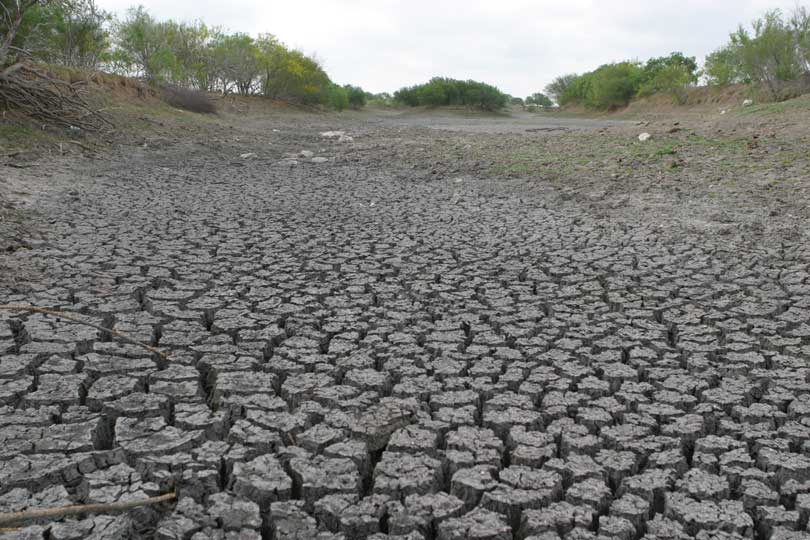By Justin Walker
Communications Specialist
Despite recent rains across the Lone Star State, farmers and ranchers are still feeling the impacts of drought this year.
Precipitation finally fell in many areas of Texas, including the Panhandle. Some areas along the coast received more than five inches of rain, and parts of the Rio Grande Valley saw significant rainfall in a short period in mid-June, resulting in flooding for some areas.
Rains fell in early July across parts of Texas, with some areas recording several inches of rainfall.
But despite the rains, Texas farmers and ranchers are still dealing with the effects of a very dry year.
Jesse Wieners, a farmer in Carson County who grows wheat, milo, cotton and alfalfa, said the June rain was the first beneficial rain of the year for his land. His precipitation levels for the year, as of mid-June, were at an inch and a half.
“We should probably be somewhere around 11 inches,” he said.
Wieners lost both his wheat and cotton crops this year due to the drought, and said he will need some productive years ahead to catch up.
“To recover from two lost crops, we are going to need two bumper crops to make up for it,” he said. “We’re certainly not going to get that this year, but maybe next year or the year after that.”
Chandler Bowers grows corn, cotton, wheat, sorghum and alfalfa in Carson County. Bowers said the drought has been rough on his crops, as well, but hail storms caused the most damage to his cotton. After being hailed out, he planted short-season corn in its place.
“I feel like it is a little less risky than waiting for that late-season cotton to come around,” he said.
Bowers also runs cattle, which has had its own set of drought-related complications. But being able to graze land in the Conservation Resave Program (CRP) has helped alleviate some of the stress.
“Even though we’ve received rain, we’re just now getting some regrowth to them,” he said. “We’re not in bad shape, but we don’t want to get back to 2011 where guys were having to sell out.”
Many farmers and ranchers look back to 2011 as a reference for just how bad the drought can get. Bowers said some were concerned 2018 could be just as devastating.
“We knew we were getting one day closer to a rain,” he said. “But even with the rain we have received, we aren’t near where we need to be for this time of year.”
Bowers said the three to four inches of rain he has received is well below what he would normally have at this time. His yearly average of 19 inches is looking unobtainable at this point.
“We missed those May rains that help get all these crops started and all the grass restarted for the spring,” he said. “We had no winter moisture. We had one farm that got a quarter of an inch in February, but that was the only measurable moisture we received until late April.”
The Texas Water Development Board’s weekly report showed rains occurring since mid-June had reduced the intensity of drought along the Texas coast and in the Panhandle. Areas west of Wichita Falls, however, saw drought conditions intensify.
As of mid July, about 49 percent of the state is suffering from some type of drought conditions.
The recent rains may not have fixed everything, but Bowers said spirits have been lifted.
“It changes your attitude quite a bit,” he said. “We just hope they keep coming.”

